The Best Ideas from COP30, the UN Climate Summit in Brazil – 18 December 2025
The Clean Coalition was a partner organization for this webinar, which took place on 18 December 2025 at 10am.
Read More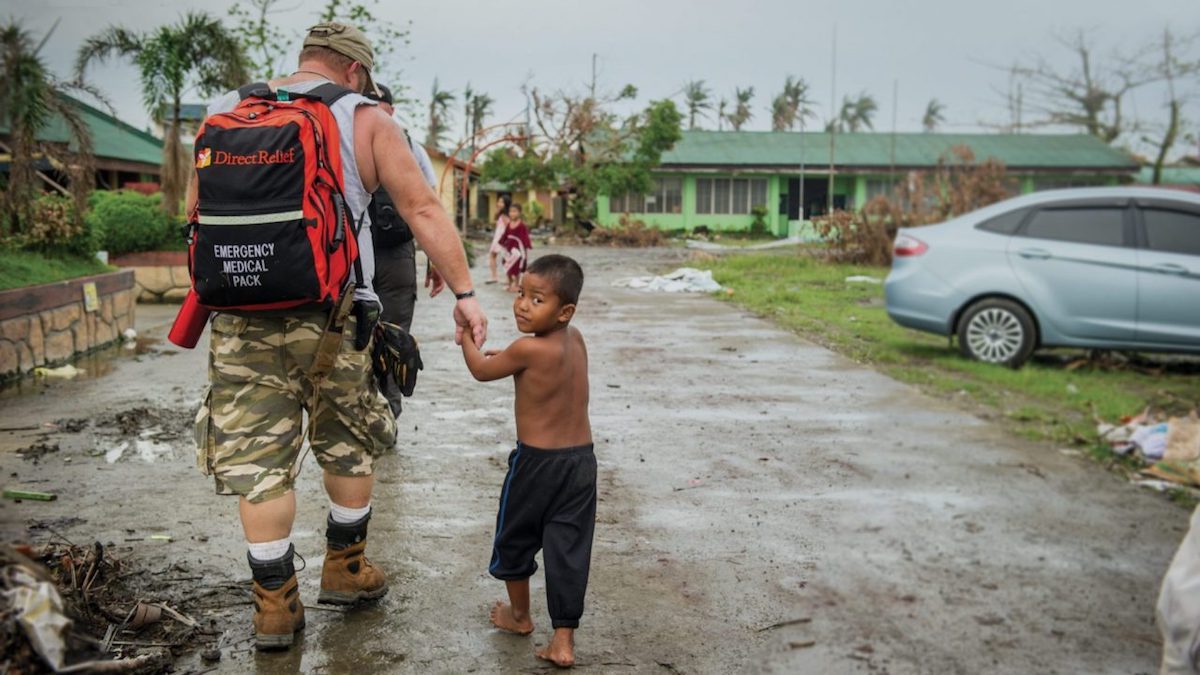
Current policies limit the size of solar microgrids, which in turn limits their resilience benefits for communities — but the technology and policy innovations needed to change this are ready.
In this case study:
With increasing natural disasters and Public Safety Power Shutoffs (PSPS), microgrids are proliferating like never before. During power outages, microgrids can “island” from the grid and operate independently, keeping a residence, municipal building, or commercial facility online.
But microgrids are prevented from maximizing their economic, environmental, and resilience benefits for our communities by barriers such as these:
These barriers limit the potential for Community Microgrids, which serve entire communities by ensuring indefinite renewables-driven backup power for critical community facilities such as fire stations, hospitals, and emergency shelters.
A prime example of these issues, and how they can be overcome, is the Solar Microgrid serving the humanitarian aid organization Direct Relief, one of the largest disaster recovery and supply nonprofits in the world. NEM and other constraints limit Direct Relief’s headquarters to about 25% of the solar that its built environments can support.
Direct Relief was founded in 1948 with the mission to improve the health and lives of people affected by poverty or emergencies. Today this top-rated, globally recognized organization is active in all 50 states and more than 80 countries, serving its life-saving mission from headquarters in Santa Barbara, California.

In 2018, Direct Relief moved into a new state-of-the-art warehouse and logistics facility that meets modern efficiency standards and is engineered to withstand earthquakes, fires, and tsunamis — allowing its life-saving logistical operations to continue in the event of a local disaster.
Direct Relief runs the largest distribution hub for humanitarian medical aid in the US. The organization’s global logistics operations, including a large stockpile of temperature-sensitive, life-saving medical supplies, depend on electricity.
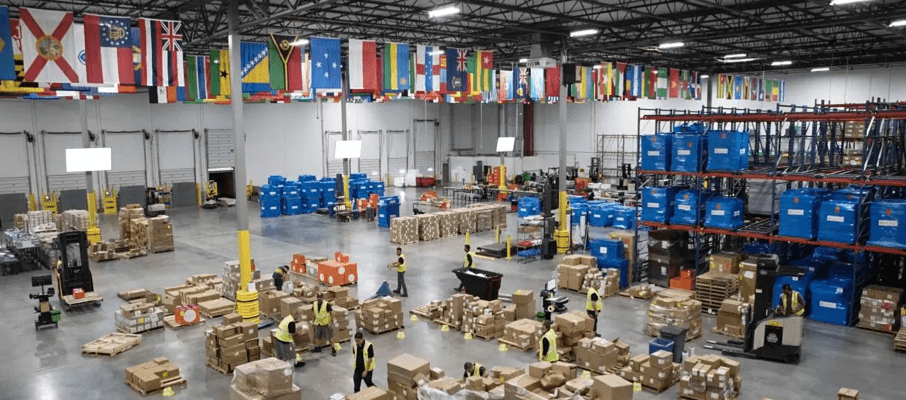
But despite the facility’s state-of-the-art engineering, its location in the Goleta Load Pocket (GLP) — a disaster-prone stretch of California coastline served by just one transmission path routed through 40 miles of mountainous terrain — leaves Direct Relief vulnerable to power outages. In the fall of 2019, that vulnerability was highlighted by Public Safety Power Shutoff (PSPS) events that utilities planned for the region to mitigate wildfire risk.

PSPS events or outages caused by earthquakes, wildfires, or debris flows could leave Direct Relief without electricity for days or even weeks at a time.
To avoid losing essential electricity during a grid outage, Direct Relief decided to power its new facility with a microgrid consisting of a solar array, a battery, and as backup to the backup, an onsite onsite diesel generator.
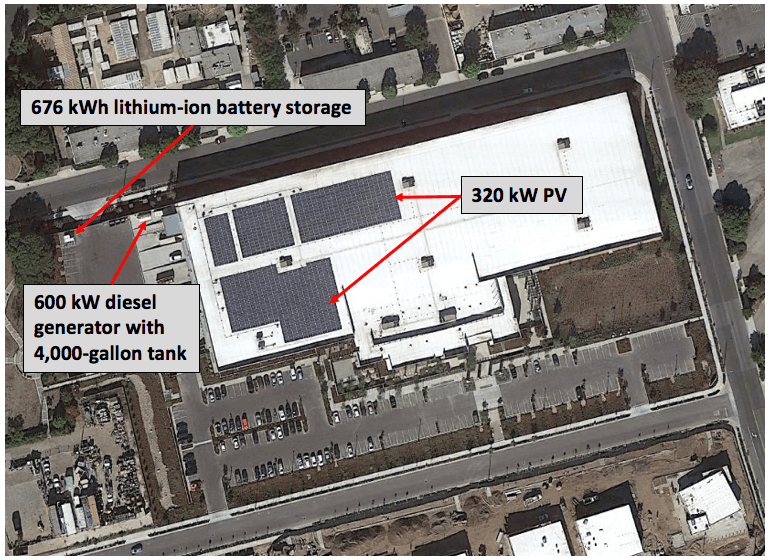
Direct Relief is in the life-saving business — not the energy generating or managing business. So they engaged a third-party microgrid provider to install, own, and operate the Solar Microgrid. Through a power purchase agreement (PPA), Direct Relief contracted to have the microgrid installed at no upfront cost to them, in exchange for consuming all the energy produced by the Solar Microgrid at a set price. Direct Relief only pays for delivered solar energy, so the Solar Microgrid needs to deliver energy in order to earn PPA payments from Direct Relief.
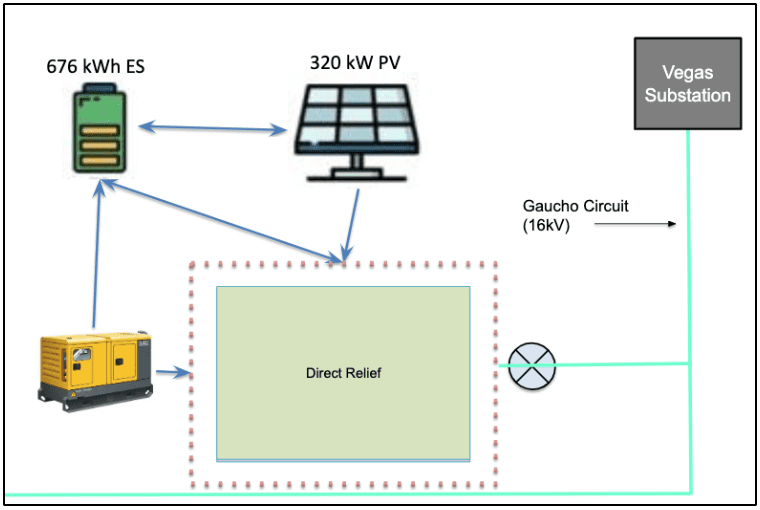
The Solar Microgrid was sized and designed while the new facility was still under construction. Best estimates were used to match the size of the system with the facility’s likely load profile. The microgrid’s solar and energy storage were designed to, at minimum, indefinitely support Direct Relief’s critical loads during a prolonged grid outage. The onsite diesel generator was included to provide backup to the backup.
The Solar Microgrid began operating in late 2018 and has been performing well — even generating more energy than expected. However, the Direct Relief facility is using more energy than anticipated, perhaps due to the increasing number of global crises to which the organization has needed to respond — along with an extensive bank of electric vehicle (EV) chargers that Direct Relief installed in 2019.


During standard operations the grid, solar, and battery work in concert, time-shifting loads and net-metering energy for maximum value. In the event of a grid outage, the solar+storage will enable operations to continue — with the sun powering the facility during the day and the battery powering it through the night until the sun rises the next morning to recharge it.
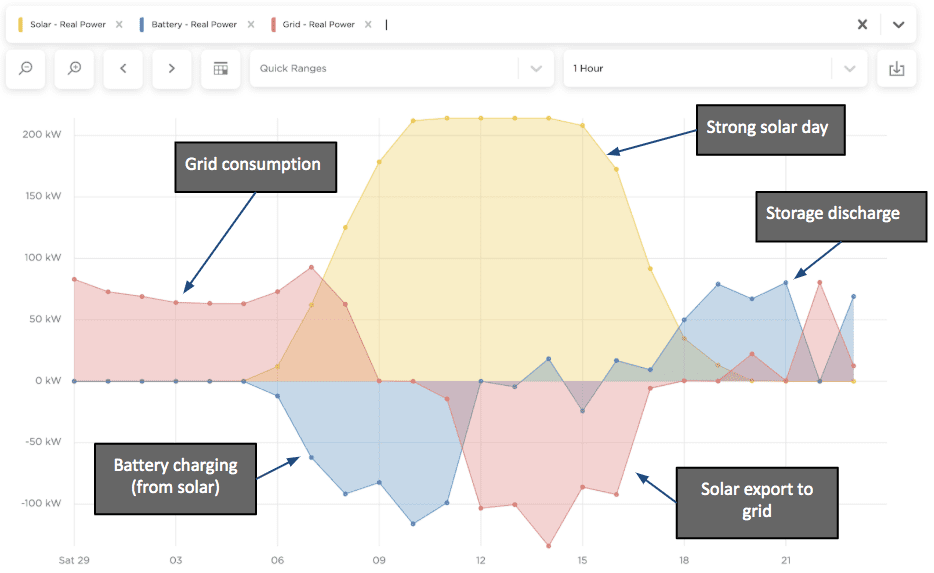
On most days, there is enough sun to charge the battery; even on cloudy days, the system will generate some solar energy. If a power outage occurs during a time of minimal solar generation — perhaps because of heavy rain — then the diesel generator is used to fill the battery. This happens only when the battery hits a minimum state of charge, and even then, only at optimum nameplate capacity until the battery is fully charged.
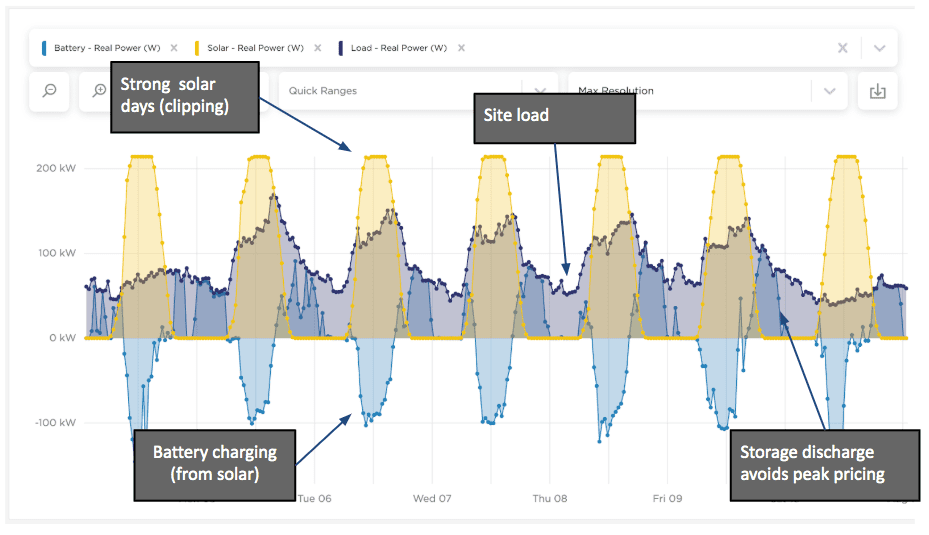
Minimizing the use of the diesel generator in this way is crucial because the average diesel generator — in addition to being highly polluting — has only two days of onsite fuel supply, which may be difficult or impossible to replenish during a disaster. In contrast, solar panels generate at least some electricity every day. The result is that the solar+storage provides indefinite renewables-driven resilience for the most critical loads.
Direct Relief places a high value on indefinite renewables-driven resilience to ensure operational continuity. Therefore, pure economics was not the deciding factor in installing its microgrid. However, the organization was still interested in comparing what it would have cost to continue to buy all electricity from the local utility, Southern California Edison (SCE), to the cost with the microgrid.
After a year of the microgrid’s operation, Direct Relief’s electricity costs (the cost of the microgrid PPA plus the electricity bought from SCE) totaled $153,213, or a blended $0.1786/kWh (including both utility charges for generation — a price for actual kWh consumed — and demand — a charge by the utility for the rate of peak consumption, or peak power that is delivered in a monthly billing period, measured in kW). If Direct Relief had bought this same amount of energy from SCE, their cost would have been about $148,375, or a blended $0.173/kWh. The premium of approximately 3%, or about $0.0056/kWh, represents what Direct Relief is currently paying for its indefinite renewables-driven resilience.
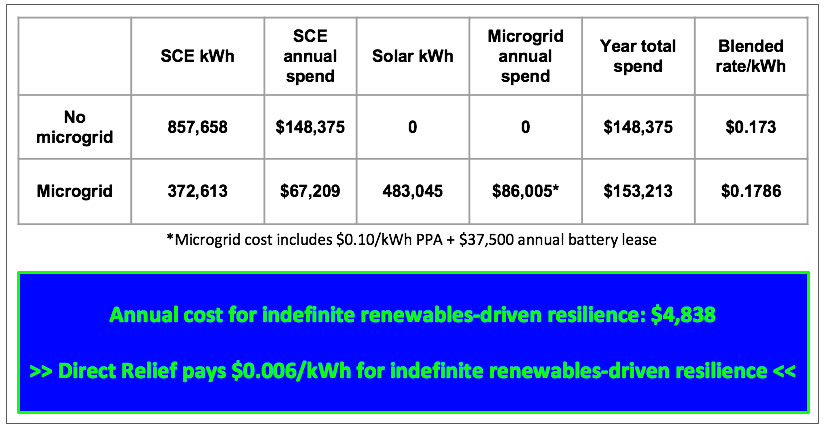
Although Direct Relief spent more than they would have without the microgrid, they gained resilience in the face of the widespread PSPS events that affected large parts of California. Indeed, when the area was threatened with potential PSPS events, Direct Relief offered their facility as a “power refuge” where community members could charge their cell phones and laptops. The small extra cost Direct Relief bears for its microgrid is directly aligned with its core mission.
Although the Direct Relief Solar Microgrid generated slightly more energy than expected, it offset only about 57% of total energy consumption because of the facility’s higher-than-expected energy use. With a goal to be “net-zero” — meaning the total amount of energy used annually equals the amount of solar generated onsite — Direct Relief is interested in expanding its solar deployment. Including additional load associated with EV chargers installed after the Solar Microgrid, a microgrid twice the size of the current one could be justified.
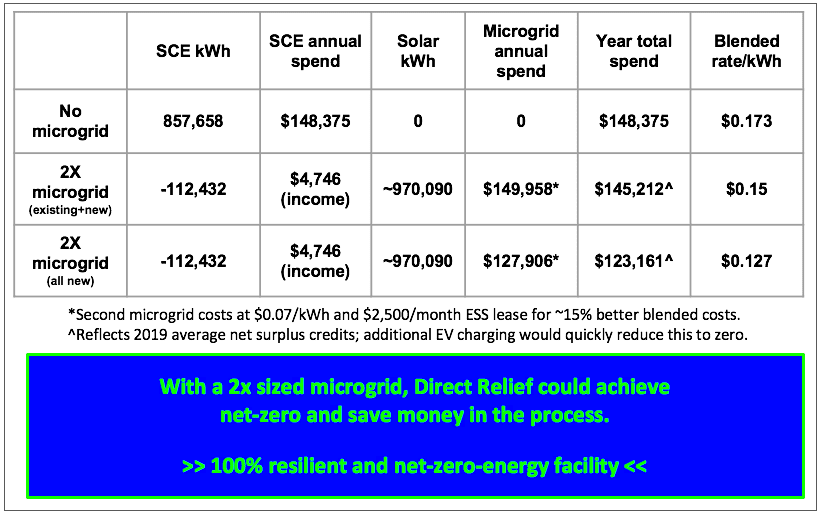
As microgrid costs continue to come down while utility costs continue to increase (even in the face of growing uncertainty of the grid’s ability to deliver power), an expanded microgrid is likely to become economically neutral or perhaps even a net benefit — even without factoring in the extensive value of the resilience it provides.
Direct Relief would like to do even more. As part of its work helping people during disasters, Direct Relief would like its facility to be a cornerstone of the Goleta Load Pocket Community Microgrid (GLPCM) that the Clean Coalition is staging to provide indefinite renewables-driven resilience for the GLP. The GLPCM can achieve 100% renewables-driven resilience for the region with about 200 MW of additional solar and 400 MWh of additional energy storage.
A Community Microgrid is a coordinated local grid area served by one or more distribution substations and supported by high penetrations of local renewables and other distributed energy resources (DER), such as energy storage and demand response. Community Microgrids can “island” from the larger grid and operate independently, serving entire communities by ensuring indefinite renewables-driven backup power for critical community facilities such as fire stations, water and communications infrastructure, hospitals, and emergency shelters.
Rules governing net energy metering (NEM), however, artificially limit Direct Relief’s potential microgrid expansion. This results in a stranded siting opportunity that, if it were allowed to be fully developed, could supply at least four times more renewable energy generation for the GLPCM. Policy innovations are needed to allow stranded siting opportunities like Direct Relief to accelerate DER proliferation that provides communities economic, environmental, and resilience benefits.
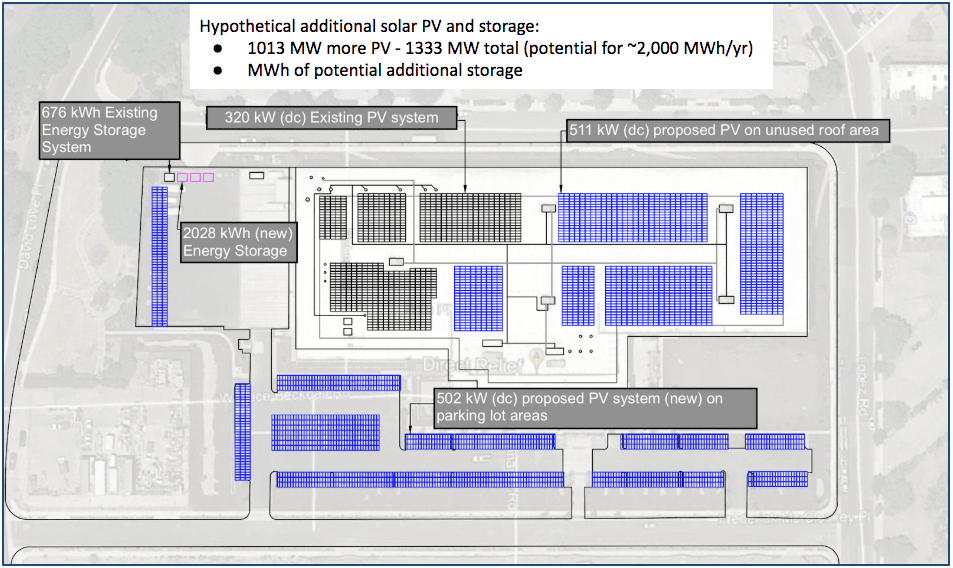
All the stakeholders associated with the Direct Relief Solar Microgrid, with the exception of the utility, want to see it expanded — not just to satisfy Direct Relief’s power needs but also to benefit the entire community while providing an example of locally sourced renewables-driven resilience.
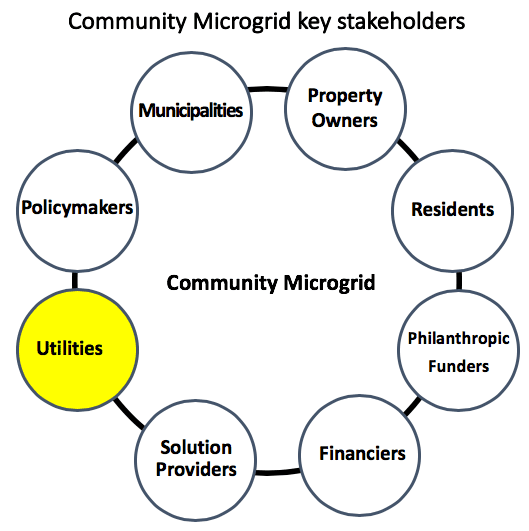
Utilities have long argued that part of the reason they limit the size of behind-the-meter (BTM) NEM systems is that non-dispatchable DER can destabilize the grid. While there is sometimes merit to this argument, there are commercially available solutions that nullify this argument. Other markets, like Australia, where legacy grid infrastructure has absorbed far higher solar penetration rates than anywhere in the US, technology has been deployed that completely nullifies the destabilization argument against high penetrations of DER.
Because Australia has seen solar penetrations levels far ahead of what has been experienced in even the most robust US markets, the grid in Australia reached its “solar hosting capacity” long ago — providing a real-world example of what will happen as US grids becomes supposedly saturated with solar.
As a solution, Australian renewable energy provider Planet Ark Power has brought to market eleXsys™, an advanced power electronics device with a suite of artificial intelligence (AI) applications enabling next-generation two-way smart grids. This award-winning technology platform manages the stability and resilience of distributed solar and wind generation. eleXsys™ unlocks the full potential of electricity networks to integrate distributed solar and wind energy, ensuring the most efficient, lowest-cost delivery of clean energy. Incorporating an integrated solar, battery, and eleXsys™ solution, underutilized rooftops are transformed into revenue-generating clean energy assets.
Using eleXsys™ also obviates the need for expensive grid infrastructure upgrades, often required by the utility when a solar array is proposed for interconnection on a feeder circuit that is unable to handle the voltage volatility caused by solar generation. Typically, developers build out an array right up to the size that would trigger an upgrade, but not any larger, to avoid the cost being passed on to them — which is often high enough to eliminate the economic case for the installation. This limits the size and positive impact of DER being developed. eleXsys™ is a game changer, enabling the largest possible DER to be built in any given location without triggering these costly grid upgrades.

Every site should be able to maximize the amount of solar installed. Leveraging as much of the built environment as possible for solar is game-changing — representing a clear path to generating enough locally generated solar energy to satisfy many communities’ needs.
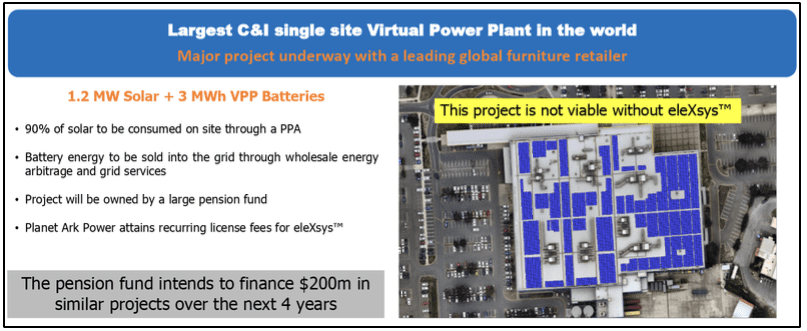
With the eleXsys™ technology, paired with energy storage and the appropriate controls, Solar Microgrids like Direct Relief’s can be built as large as possible without adversely impacting the grid. This allows any power that isn’t used by the facility to be incorporated into the front-of-meter (FOM) energy generation mix distributed across the grid, benefitting the entire community.
Further, using eleXsys™ avoids a situation such as Direct Relief’s, where the facility’s estimated consumption before it was built resulted in an undersized microgrid. With eleXsys™, the DER would have been built as large as the facility could host — which would have ensured that the facility met its net-zero goals. Importantly, this would have also enabled the microgrid to benefit the community without concern for any negative impact on, or resulting upgrade needed to, the utility’s infrastructure.
With eleXsys™, the technical limitations on the size of solar in the built environment disappears — and the only reason that local solar generation can’t be maximized to serve our communities’ energy needs is monopoly-driven, archaic policy.
Simple, but fundamental, policy reforms and market mechanisms are needed to enable a transition from a BTM versus FOM way of thinking to a more intuitive and obvious “build as big a Solar Microgrid as you can” approach to DER development.
Policy innovations should include requiring utilities to 1) facilitate maximizing Solar Microgrids beyond current NEM limits, and 2) enable Community Microgrids.
Also crucial to incentivizing solar installations to be as large as possible are Feed-in-Tariffs (FITs) — standardized, long-term, guaranteed contracts that allow renewable energy projects to sell power to the local utility or other load-serving entity. A good example is the state-of-the-art FIT the Clean Coalition designed for the City of San Diego, with Market Responsive Pricing to ensure cost-effectiveness and a Dispatchability Adder to incentivize energy storage.
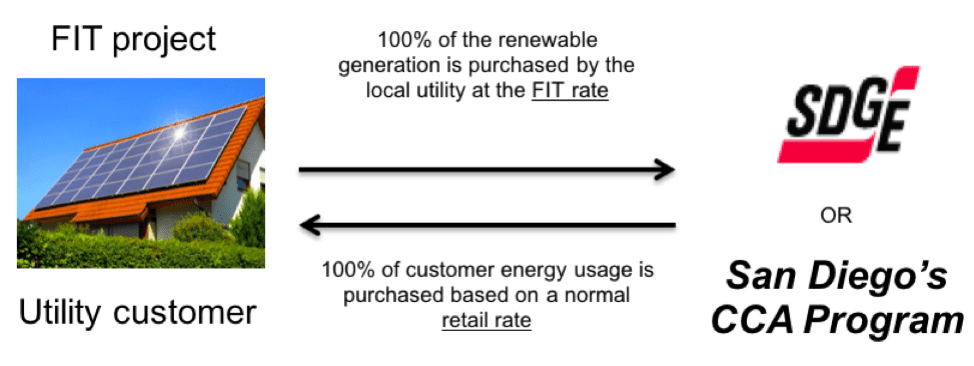
The Dispatchability Adder is a fixed $/kWh bonus on top of the FIT rate, providing value for the Dispatchable Energy Capacity Services (DECS) provided by solar+storage. A well-designed FIT like this one keeps prices low while incentivizing greater deployment of DER, unhampered by NEM sizing limits.
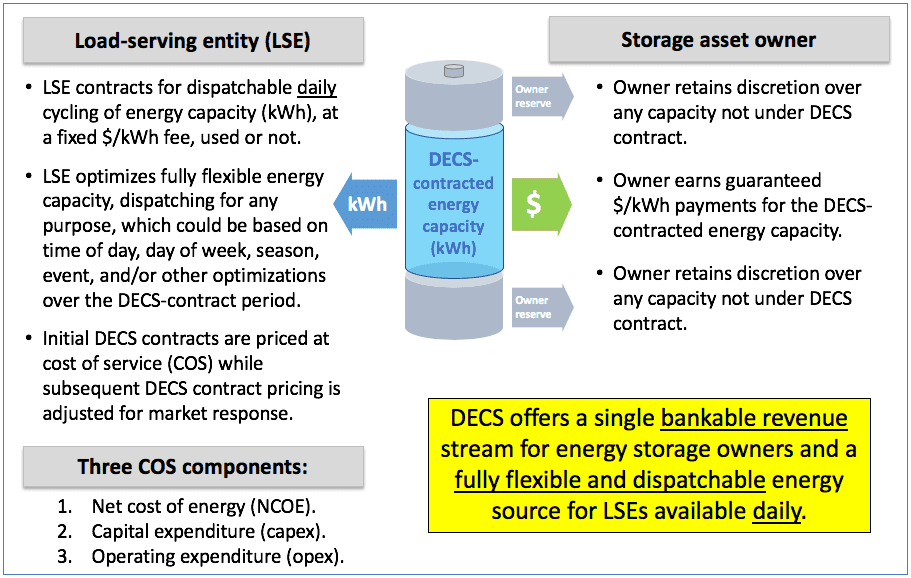
An example of using the Planet Ark Power eleXsys™ technology shows how the economics for the largest possible Solar Microgrid at Direct Relief are achievable — even without including the resilience value to Direct Relief:
This would be achieved through a combination of value from Direct Relief’s increased purchases of the energy produced by the microgrid (which also brings them to net-zero) and revenue earned by the sale of FOM energy that eleXsys™ enables, benefiting the local community.
Coupled with the appropriate policy reform, eleXsys™ will enable developers to achieve attractive economics for projects like Direct Relief’s microgrid. Hosts like Direct Relief will be able to achieve their net-zero goals and also earn lease revenue from developers for the additional space used for the maximized solar system.
For facilities not owned by the occupant, a common situation in commercial buildings, eleXsys™ not only enables the built environment to be fully maximized for a facility’s own renewable energy generation but also solves the “split incentive” problem that has plagued BTM solar development, by separating the value of NEM from the facility owner. The eleXsys™ system allows the tenant using the facility to enter into a PPA and fix their cost of energy while sourcing it from a renewable source, at the same time enabling the landlord to charge rent for the use of the roof or parking lot, thus monetizing their asset as they host DER that can be sized to benefit the entire community.
Implementing the right economic drivers and policy changes will have a radical and beneficial impact on when, where, and how we transition to locally generated, resilient electricity.
With increasing severe weather events and power outages, our communities need renewables-driven resilience today. The technology is ready now to easily expand microgrids like Direct Relief’s, without any negative impact on the grid. Now is the time to enact the policy reforms and implement the market mechanisms that will allow facilities like Direct Relief to build the largest Solar Microgrids possible.
The latest in clean local energy
Learn about our innovative projects and initiatives on our blog, and see what others are reporting about our important work.
The Clean Coalition was a partner organization for this webinar, which took place on 18 December 2025 at 10am.
Read MoreThis podcast episode of Energy Central's "Power Perspectives" welcomes Craig Lewis, Founder and Executive Director of the Clean Coalition, to explore how local solar and storage can flatten the duck curve, cut costs, and build a more resilient grid.
Read MoreThe Clean Coalition presented during this in-person gathering, held on Friday, 5 December 2025 from 3:30–5:00 pm PST at CEC’s Environmental Hub, 1219 State St Suite A, Santa Barbara, CA 93101.
Read More